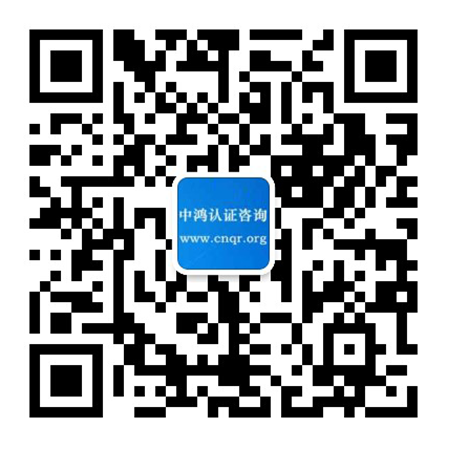HACCP/ISO22000食品安全管理体系认证:澳大利亚食品安全风险分析应用情况
HACCP / ISO22000 food safety management system certification: Australian food safety risk analysis application
澳大利亚有一套科学的风险分析系统用于进口食品中的化学剧毒物和有害微生物。风险分析是针对那些超过安全标准的进口食品所作的。澳大利亚把进口食品分为风险食品、积极监督食品和随机监督食品这3类。
Australia has a set of scientific risk analysis system for imported food products in chemical toxic substance and harmful microorganisms. Risk analysis on the safety standards over the imported food made by. Australia imported food is food, a positive risk supervision of food and food of the 3 class of random supervision.
㈠食品的风险管理
Food risk management
1.风险食品
1 risk food
风险食品就是那些已知能够给人体健康及安全带来风险的食品。风险食品进口时必须由澳大利亚主管部门(澳大利亚检疫检验局AQIS)批批抽样检验。检验项目取决于供应商的历史纪录。典型的风险食品包括冷冻海鲜的微生物和品质,浆果类的杀虫剂,保鲜水果的合成甜味剂,花生的黄曲霉毒素,罐头食品和糖果的铅污染等等。
The risk of food is the known to human health and safety risks of food. The risk of food be imported by the Australian authorities ( the Australian quarantine and inspection service AQIS ) batch sampling inspection. Inspection item depending on the provider's historical record. A typical risk food including frozen seafood microorganism and quality of insecticides, berries, fruit of synthetic sweeteners, peanut aflatoxin, canned food and confectionery lead pollution etc..
风险食品分为三种检查水平:
The risk of food are divided into three kinds of inspection level:
⑴严格水平,对进口批实施批批检验,连续5批检验通过后转为正常水平;
The strict standard, to import batch of the implementation of a batch of examination, 5 consecutive batch inspection after conversion to normal level;
⑵正常水平,按进口批的25%抽样检验,连续20批检验通过后转为简化水平;在正常水平状态下,只要一次检验不通过,就转为严格水平;
The normal level, according to import the 25% batch, sampling inspection, 20 consecutive batch test after passing to simplify level; in the normal state, as long as a test, turn into a strict level;
⑶简化水平,按进口批的5%进行检验;在简化水平下,只要一次检验不通过,就转为正常水平。
The simplified level, according to import batch test in 5%; simplified level, as long as a test, it reverted to normal level.
2.积极监督食品
2 active surveillance of food
积极监督食品就是那些有可能给人体健康及安全带来风险,但目前对这些风险了解不足,或者由于种种原因需要对风险进一步确认或者评估。
Active surveillance of food are those likely to human health and safety risks, but the lack of understanding of the risk, or for various reasons need to further confirm or risk assessment.
3.随机监督食品
3 random supervision of food
随机监督食品是除风险食品和积极监督食品以外的食品。进口时随机抽查5%。
Random supervision of food is food in addition to risk and active surveillance of food other food. Import random sampling 5%.
澳大利亚进口食品不通过的主要原因有以下9种:
Australia imports of food through the main reason has the following 9 kinds:
①标签;②合成甜味剂;③镉;④色素;⑤乙烯氧化物;⑥重金属;⑦破损的罐头;⑧罐头容器没能通过压力测试;⑨防腐剂。
The label; the synthetic sweeteners; the CD; the pigment; the ethylene oxide; the heavy metal; the broken canned; canned container and failed to pass the stress tests of preservative.
㈡食品微生物的风险分析
Two food microbiological risk analysis
比如进口生奶酪:①确认奶酪中的有害的微生物病原体;②在奶酪生产的各个环节评估此微生物的寿命;③与经巴氏灭菌或热处理过的牛奶所作的奶酪作等同比较;④检查原产地的检验审核机构以保证此奶酪产品是严格按照规章生产的。
Such as import raw cheese cheese: confirmation of harmful microbial pathogens; in cheese production each link to evaluate the microbial life; 3 and pasteurized or heat-treated milk cheese made by equal comparison; the origin of the inspection agencies inspection to ensure that products are in strict accordance with the rules of this cheese production the.
㈢转基因食品的风险分析
Three GM food risk analysis
澳大利亚卫生主管当局认为转基因食品的风险分析数据可以有很多来源,安全性评估主要是以同类非转基因食品为基准。
Australian health authorities believe that genetically modified food risk analysis data can have many sources, safety assessment of genetically modified food is similar to the reference.
HACCP/ISO22000食品安全管理体系认证:澳大利亚食品安全风险分析
发布时间: 2011-11-16 01:01 点击:
热门
- BRCGS认证 BRCGS全球食品安全标准是全球市场领先的全球食品安全倡议(GFSI)计划中的第
- ISO22000认证、FSSC22000认证和HACPP体系认证的区别和联系
- ISO22716认证 ISO22716化妆品良好生产规范认证标准简介
- HACCP认证 市场监督总局要求校园供餐单位HACCP体系认证 关于落实主体责任强化校园食品
- 全面分析FSSC22000认证与ISO22000认证的区别与联系
- 国家认监委:新版ISO22000食品安全管理体系认证标准将于2021年7月1日起实施
- ISO22000:2018食品安全管理体系认证文件资料清单大全,收藏转发喔
- 冷链食品企业应当做哪些认证证书提高公信力?
- haccp认证需要什么条件,申请HACCP食品安全管理体系认证应具备哪些条件
- ISO22000食品安全管理体系认证中的食品危害主要集中在五个主要方面
最新
- HACCP认证,春雪食品HACCP危害分析关键控制点体系及欧盟BRC(全球食品安全标准)认证
- 有效型HACCP体系认证咨询五大过程详解-HACCP食品安全体系认证网
- HACCP认证多少钱,HACCP体系认证价格,HACCP认证流程和认证周期
- BRCGS认证,正大蛋业BRCGS最新版第九版全球食品安全标准认证
- HACCP认证产品的标识和可追溯性的理解与应用
- HACCP的7大原则的理解与应用-食品安全管理体系认证网
- haccp有几个部分组成 HACCP系统主要包括哪些内容
- HACCP认证体系中关键控制点监控程序包括哪些信息?
- HACCP体系认证中危害分析应包括哪些信息?
- HACCP体系认证中原料、食品添加剂、食品相关产品的描述应包括哪些信息?


